Why Was Ayllu Very Important For The Inca People?
A. Sutherland - AncientPages.com - The "ayllu" was the traditional form of a community in the Inca society, especially among Quechuas and Aymaras, the indigenous people of South America.
Everyone in the Inca Empire was part of an ayllu.
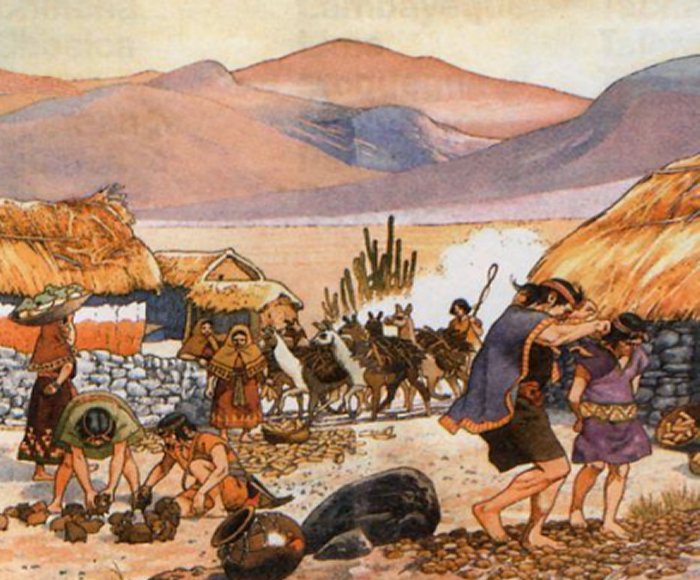 Inca community of Ayllu. source
Inca community of Ayllu. source
This form of organized society was particularly significant in Peru and Bolivia. The ayllu tradition existed and functioned well before the Inca conquest and continues to exist today in Andean communities.
The ayllu ("enlarged community") was formed of a number of families related to one ancestor they had in common. Extended family groups could adopt non-related members who had to assume the full responsibility of membership. The ayllu members had mutual obligations to each other and were aware of their duties towards society and the nature surrounding them.
They owned a piece of land and worked together, farming it collectively. They were self-sufficient, cultivated much of their food, or traded for all the food they consumed.
They educated their children to continue this tradition.
The Inca people had to work together to build houses, care for large herds of animals, plant and plow fields, and maintain irrigation systems.
Inca Farmers, 1583. Incan farmers planting corn with the aid of an Andean foot plow. The first chronicle and good government (1583-1615) by Felipe Guaman Poma de Ayala. Source:
Their duty was also to work for the government and serve in the army; in the meantime, other ayllu members would come and perform the necessary work in the field.
Ayllus – Skilled Craftsmen
Not all ayllus worked in agriculture. Many others would specialize in manufacturing pottery, jewelry, or clothing.
Necessary skills were transferred from generation to generation within the same ayllu. Ayllus produced virtually anything essential for everyday living, which the state would distribute to other ayllus.
The abundance and diversity of resources and their availability during bad crops and war made the population loyal to the Sapa Inca and the local government.
Kurakas, 'Huaca' Tradition And Marriage
Kurakas (also known as 'Karakas') were leaders at the head of the ayllu community.
As Rebecca M. Seaman writes in "Conflict in the Early Americas," they were "… responsible for organizing the varying ayllus for the purpose of land distribution, farming, public works, and other communal purposes. In this manner, family kinship groups [ayllus] labored, celebrated, worshiped, and paid tribute together as a unit.
However, it was the combined contributions of the varying ayllus that helped sustain the greater community…"
Karakas also provided chicha corn beer and food for all during religious celebrations. Reciprocity was expected from all of the leaders as a reward for the Ayllu's hard work. The payment for this work was usually in the form of the same service or could be the exchange of a product of some kind, a textile, or sometimes even food.
The ayllus members had their own huaca (or wak'a), or minor deity, usually embodied in a physical object such as a rock or mountain. As to the ayllus marriage traditions, they were required to marry someone from their own ayllu.
Like all self-sustaining communities, the Ayllu also had specific problems they could only solve with a helping hand. In the case of natural disasters, for example, farmers within the Ayllu community could not feed their families. In that case, they had to rely on the Inca storehouse system.
Written by – A. Sutherland - AncientPages.com Senior Staff Writer
Updated on January 24, 2024
Copyright © AncientPages.com All rights reserved. This material may not be published, broadcast, rewritten or redistributed in whole or part without the express written permission of AncientPages.com
Expand for referencesMore From Ancient Pages
-
 Mysterious Unknown Strange-Looking Ancient Seafarers – Survivors Of A Now Vanished Race?
Civilizations | Oct 11, 2022
Mysterious Unknown Strange-Looking Ancient Seafarers – Survivors Of A Now Vanished Race?
Civilizations | Oct 11, 2022 -
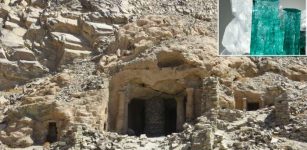 Emerald Production In Eastern Desert Of Roman Egypt – New Evidence
Archaeology | Apr 16, 2021
Emerald Production In Eastern Desert Of Roman Egypt – New Evidence
Archaeology | Apr 16, 2021 -
 Yokai Kitsune: Charming And Cunning Liar With Double Nature In Japanese Folklore
Featured Stories | May 22, 2020
Yokai Kitsune: Charming And Cunning Liar With Double Nature In Japanese Folklore
Featured Stories | May 22, 2020 -
 Mysterious Kaali Crater And The Holy Lake – Sacred Ancient Places In Estonia
Featured Stories | Jan 19, 2018
Mysterious Kaali Crater And The Holy Lake – Sacred Ancient Places In Estonia
Featured Stories | Jan 19, 2018 -
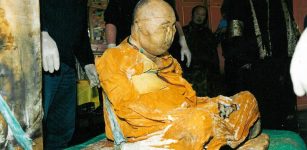 Mystery Of Lama Dashi-Dorzho Itigilov: A Mummy Whose Body Defies Time
Featured Stories | Sep 21, 2018
Mystery Of Lama Dashi-Dorzho Itigilov: A Mummy Whose Body Defies Time
Featured Stories | Sep 21, 2018 -
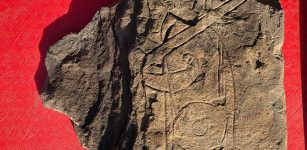 Remarkable Early Medieval ‘Govan Warrior’ Stone Discovered In Glasgow, Scotland
Archaeology | Sep 22, 2023
Remarkable Early Medieval ‘Govan Warrior’ Stone Discovered In Glasgow, Scotland
Archaeology | Sep 22, 2023 -
 Idiots Were Not Allowed To Vote In Ancient Athens
Ancient History Facts | May 30, 2016
Idiots Were Not Allowed To Vote In Ancient Athens
Ancient History Facts | May 30, 2016 -
 Why Have So Few Who Have Seen This Mysterious Victorian-Era Entity Survived?
Featured Stories | Sep 8, 2024
Why Have So Few Who Have Seen This Mysterious Victorian-Era Entity Survived?
Featured Stories | Sep 8, 2024 -
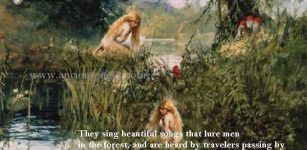 Huldra: Seductive Female Creature Living In Forest Or Mountains In Norse Beliefs
Featured Stories | Feb 8, 2018
Huldra: Seductive Female Creature Living In Forest Or Mountains In Norse Beliefs
Featured Stories | Feb 8, 2018 -
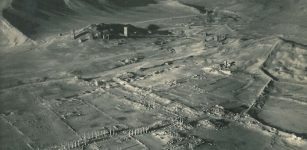 Food Insecurity Led To An International Conflict 2,000 Years Ago
Archaeology | Sep 22, 2022
Food Insecurity Led To An International Conflict 2,000 Years Ago
Archaeology | Sep 22, 2022 -
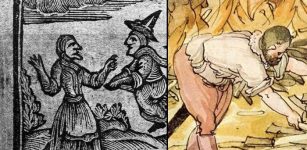 Five Witchcraft Myths Debunked By An Expert
Featured Stories | Oct 27, 2023
Five Witchcraft Myths Debunked By An Expert
Featured Stories | Oct 27, 2023 -
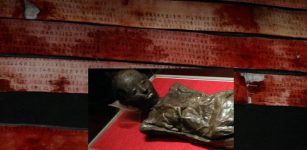 ‘Liber Linteus’ – Unique History Of Ancient ‘Linen Book’ Written In Etruscan That Still Remains Poorly Understood
Artifacts | Oct 21, 2019
‘Liber Linteus’ – Unique History Of Ancient ‘Linen Book’ Written In Etruscan That Still Remains Poorly Understood
Artifacts | Oct 21, 2019 -
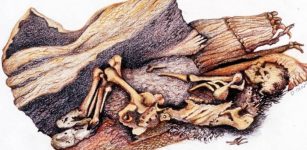 DNA Study Of Controversial Ancient North American Mummies, Including The Spirit Cave Mummy Opens An Extraordinary Chapter In Human History
Archaeology | Nov 15, 2018
DNA Study Of Controversial Ancient North American Mummies, Including The Spirit Cave Mummy Opens An Extraordinary Chapter In Human History
Archaeology | Nov 15, 2018 -
 Saptarishi – Seven Sages Who Guided Humanity During Four Great Ages
Featured Stories | Apr 2, 2019
Saptarishi – Seven Sages Who Guided Humanity During Four Great Ages
Featured Stories | Apr 2, 2019 -
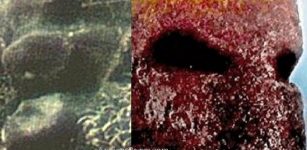 Prehistoric Puzzle: Three Gigantic Stone Heads Of Unknown Origin
Featured Stories | Mar 17, 2020
Prehistoric Puzzle: Three Gigantic Stone Heads Of Unknown Origin
Featured Stories | Mar 17, 2020 -
 6,000-Year-Old Village Unearthed In Kurdestan
Archaeology | Apr 12, 2016
6,000-Year-Old Village Unearthed In Kurdestan
Archaeology | Apr 12, 2016 -
 Extraordinary Discovery Of 2,000-Year-Old Bronze Statue Rewrites Etruscan-Roman History
Archaeology | Nov 8, 2022
Extraordinary Discovery Of 2,000-Year-Old Bronze Statue Rewrites Etruscan-Roman History
Archaeology | Nov 8, 2022 -
 Ancient Symbol Fleur-de-lis: It’s Meaning And History Explained
Ancient Symbols | May 19, 2020
Ancient Symbol Fleur-de-lis: It’s Meaning And History Explained
Ancient Symbols | May 19, 2020 -
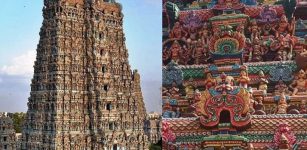 Meenakshi Temple Of Madurai Is Among Most Powerful Sacred Sites For Hindu People
Featured Stories | Apr 29, 2021
Meenakshi Temple Of Madurai Is Among Most Powerful Sacred Sites For Hindu People
Featured Stories | Apr 29, 2021 -
 Genes For Learning And Memory Are 650 Million Years Old – Study Shows
Evolution | Jul 19, 2023
Genes For Learning And Memory Are 650 Million Years Old – Study Shows
Evolution | Jul 19, 2023

